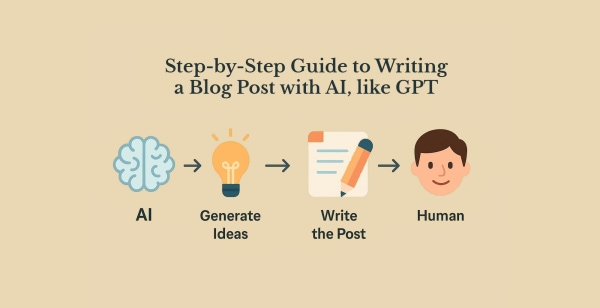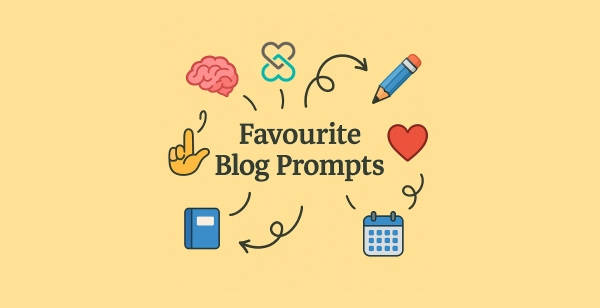Morweb's Step-by-Step Guide to Using GPT for Your Organization's Blog


Want an engaging website?
At Morweb, we understand that creating consistent, high-quality blog content can be a challenge—especially for mission-driven organizations with small teams. That’s why we’re big believers in using tools like GPT to simplify content creation.
With a thoughtful approach, GPT (like ChatGPT or other AI writing tools) can help your organization save time, boost visibility on search engines, and produce content that still feels personal and authentic.
In this guide, we’ll walk you through how to use GPT effectively, step-by-step. Then we’ll share 10 of our favorite blog prompts to help you get started right away.

Why Should Nonprofits Use AI like GPT for Blog Writing?
GPT is more than a content generator—it’s a productivity partner. Here’s how it helps:
-
Speeds up the writing process by generating drafts or brainstorming ideas.
-
Optimizes content for SEO, increasing your chances of being found online.
-
Helps non-writers produce well-structured, engaging content.
-
Supports your brand’s voice when edited and customized correctly.
Whether you're running a community nonprofit, a school communications team, or a member-driven association, GPT can take your blog strategy to the next level.

Step-by-Step Guide to Writing a Blog Post with AI, like GPT
1. Define Your Purpose and Audience
Start by identifying who you’re writing for and what you want the blog post to achieve. Are you speaking to donors, members, families, or the general public? Do you want to inform, inspire, or drive a specific action?
Example prompt: "Write a blog post for a nonprofit focused on mental health. The goal is to show donors the impact of their contributions in 2024."
2. Generate Blog Topic Ideas
Use GPT to brainstorm content ideas aligned with your goals, calendar, or campaigns.
Example prompt: "Give me 10 blog topic ideas for a nonprofit animal shelter trying to attract volunteers."
Tip: Ask for seasonal or event-specific ideas like “back-to-school,” “Giving Tuesday,” or “Earth Day.”
3. Build an Outline
Once you’ve selected a topic, ask GPT to generate a post outline with an introduction, key points, and a conclusion. This helps keep your post focused and easy to read.
Example prompt: "Create an outline for a blog post titled ‘5 Ways Our Volunteers Are Making a Difference in 2025.’"
4. Draft the Post
Feed the outline back to GPT and ask it to create a rough draft. You can request a specific tone, such as friendly, inspiring, or professional.
Example prompt: "Using this outline, write a 600-word blog post in a warm and inspiring tone."
5. Personalize It
This is the most important step. AI can provide structure, but your stories, quotes, and specific details are what make the post truly yours. Add real names, local events, photos, and specific outcomes whenever possible.
Tip: Think of GPT as a writing partner, not a replacement for your voice.
6. Optimize for SEO
You can ask GPT to help incorporate keywords naturally, suggest a better title, or write a meta description for search engines.
Example prompt: "Edit this blog post to include the keyword ‘youth mentorship in Chicago’ while keeping the tone conversational."
7. Review and Finalize
Always review for accuracy, tone, grammar, and brand alignment before publishing. AI is helpful, but human oversight is essential.

Morweb’s Favorite Blog Prompts
To make content creation even easier, we’ve compiled 10 of our favorite GPT prompts that work well for nonprofits, schools, and associations. Just fill in the blanks to match your organization’s programs and mission.
-
Impact Story
"Write a blog post that tells the story of a person positively impacted by our [youth mentorship program]. Include quotes, specific outcomes, and a call to action for donors." -
Behind-the-Scenes Spotlight
"Create a blog post that highlights a day in the life of one of our [animal shelter volunteers]. Make it relatable and engaging." -
Event Recap
"Write a recap of our recent [back-to-school fundraiser] including key moments, placeholder photos, and a thank you to attendees and sponsors." -
Donor Appreciation
"Generate a thank-you blog post recognizing the contributions of our donors and how their support helped us accomplish [building a new community kitchen]." -
How-To/Educational Post
"Write a blog post titled ‘How to Get Involved with [local environmental efforts] in 2025’. Make it practical and motivating." -
Top 5 List
"Create a ‘Top 5 Ways You Can Support [Our Organization] This Year’ blog post. Include ideas like donating, volunteering, and sharing on social media." -
Staff or Board Introduction
"Write an introduction blog post for our new [Director of Programs], including a short Q&A and why they’re excited to join us." -
Annual Reflection
"Write a blog post reflecting on our major accomplishments in [2024], lessons learned, and what we’re working toward in [2025]." -
Awareness Campaign Feature
"Create a blog post for [National Disability Awareness Month] that shares facts, stories, and how our organization is involved." -
Alumni or Member Spotlight
"Write a spotlight post on a former [after-school program participant] who went on to achieve something significant thanks to our program."
Final Thoughts
At Morweb, we’ve seen how organizations can use GPT to save time, improve consistency, and build a more active blog strategy. When used responsibly, AI can help you focus more on your mission while keeping your website fresh and engaging.
Need help building a content workflow or optimizing your blog for SEO within Morweb CMS? We’re here to help. Let’s make your content work smarter—not harder.




